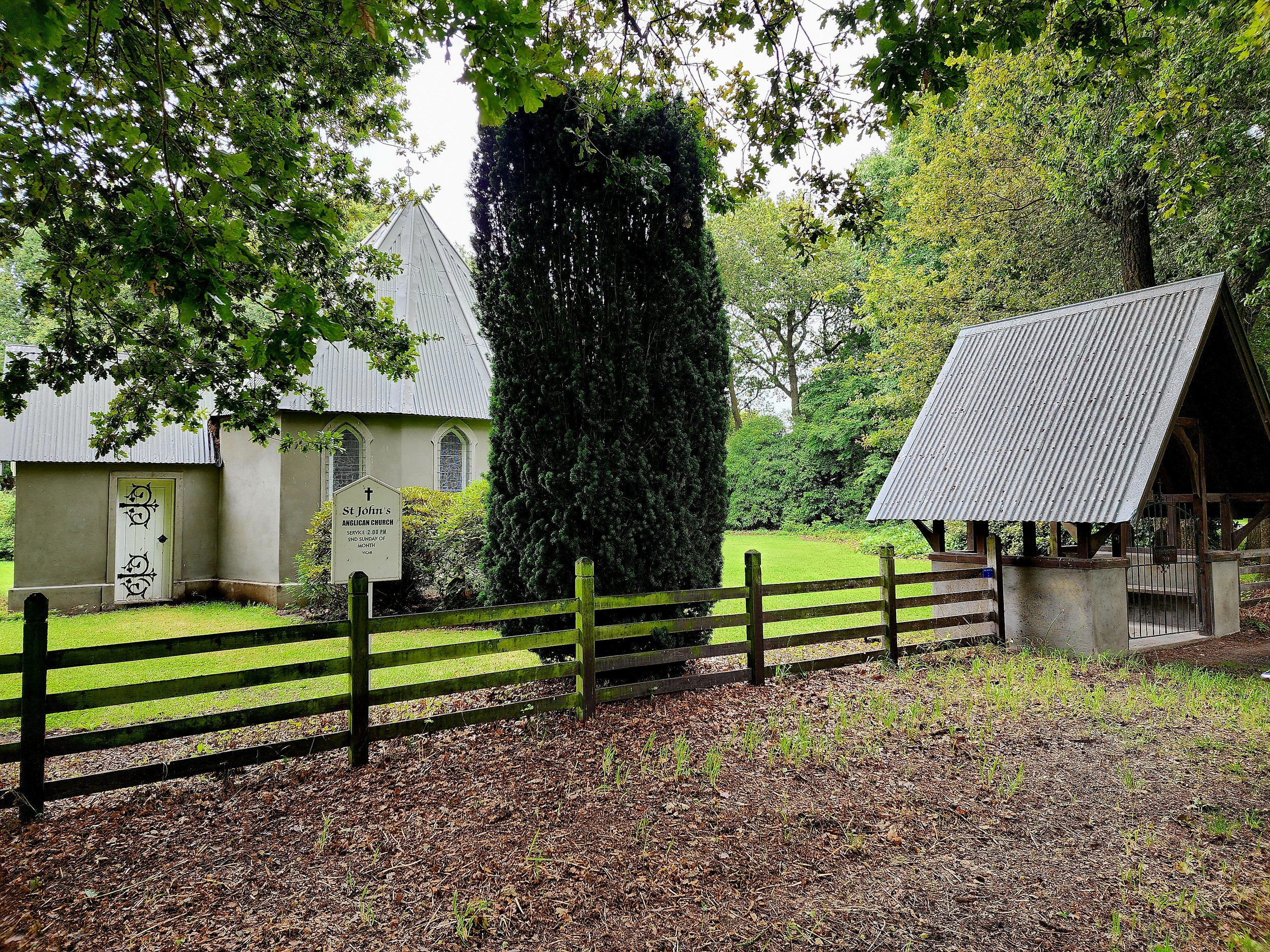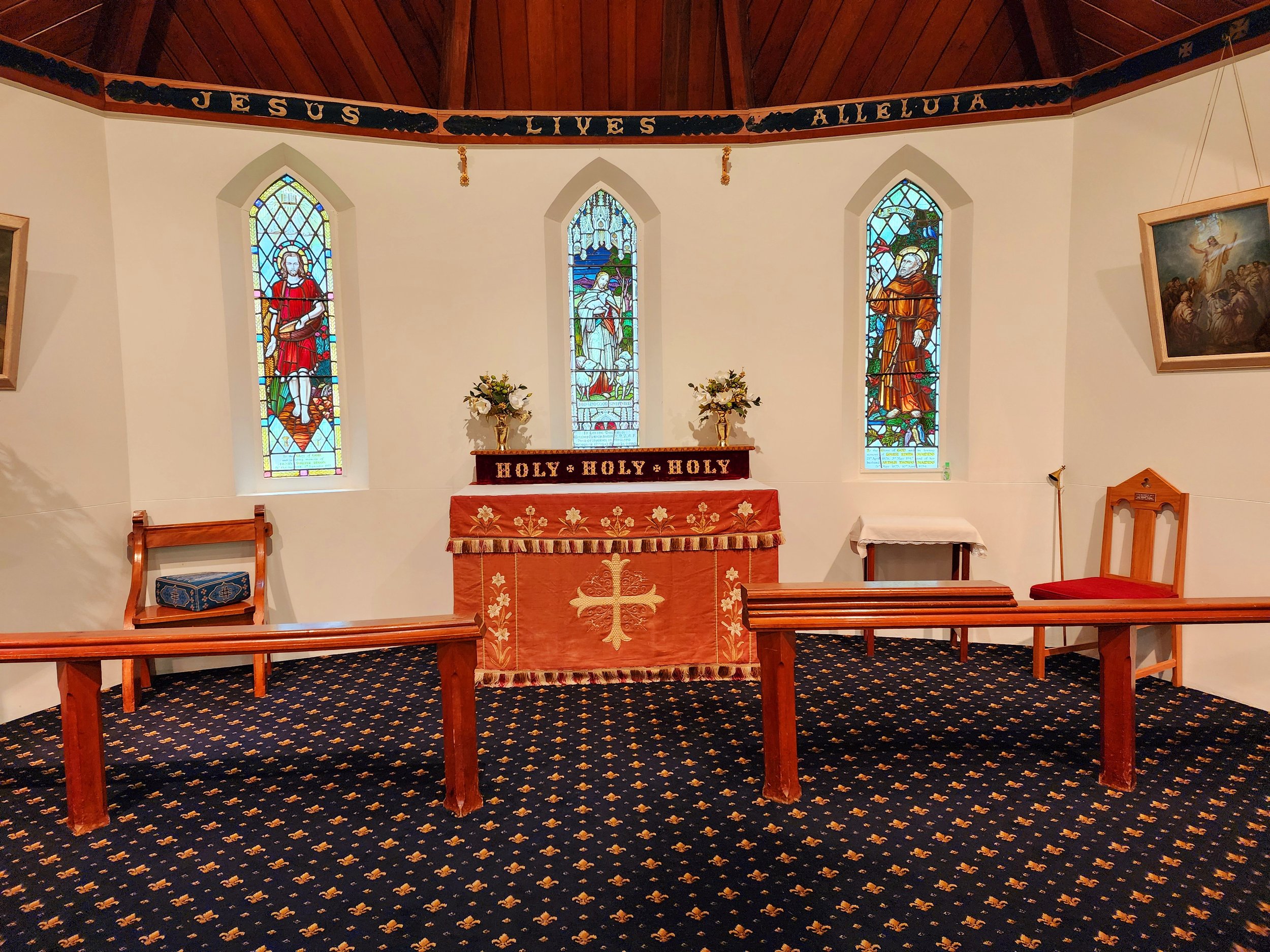St John’s at Barrhill
8 Lime Avenue
Barrhill Village
Worship services are held on the 2nd Sunday of the month at 9am.
John Cathcart Wason was born in Barrhill, Ayrshire, Scotland in 1848 and immigrated to New Zealand in 1868 aged 20. In February 1869 Wason bought the Lendon Run of 20,000 acres (1250 of freehold) on the south bank of the Rakaia River and renamed it Corwar after his family’s property in Scotland. He wanted to create a model estate and planted oaks, limes, walnuts and poplars to create a British appearance. He created a mid-sized freehold estate with a large mansion overlooking the river complete with gate lodge (Heritage Item 8, Corwar Lodge). Part of this estate was a model village, named Barrhill after his home town in Scotland, which was to mimic the British ideal of a squire in his manor house with the workers housed nearby.
St John’s Church, built in 1877 formed the centre of this community. Prior to its construction, religious services are believed to have been held in Wason’s woolshed. The Church, along with the school (Heritage Item 6) and schoolhouse (Heritage Item 7), are good early examples of the use of concrete. At its peak Barrhill comprised of the Church, school, schoolhouse, a bakery, blacksmith, post office, boiling works (for mutton), store, inn and about 15 cottages. The 1877 village plan featured 28 sections marked around a central market square. The Church was constructed in conjunction with other local landowners and the first service was conducted by the Reverend W E Paige of Ashburton on 8 July, 1877.
Wason planted sycamores, birches, poplars and oaks in an unusual shape within Barrhill. Four outer avenues (of four different tree types) form a square which is bisected by two avenues forming a cross. It was not until an aerial photo was taken in 1975 that locals realised the central oak trees were planted in the shape of three interlocking circles suggesting the symbol of the Trinity, with St John’s church as the focal point. When the railway bypassed Barrhill in the 1890s, the village started to decline and Wason sold up in 1900 and moved back to Scotland. His mansion burned down shortly after that. Over time most of the original buildings in the village have been lost, with just the three concrete buildings remaining in Barrhill and the gate house slightly further along the road. The school closed in 1938 due to a dwindling number of pupils. The church has been in continuous use since it opened, and is the only building in the village still used for its original purpose.
The lychgate was built for the centennial of the church (in 1977) as a tribute to Wason and other pioneers. The building is also of importance due to its links with John Cathcart Wason. He was said to be an unusually large man (over 6 feet 6 inches (1.98 m) tall), he is noted both as an innovative farmer and for having passed his time in the British House of Commons by knitting.
Source: Ashburton District Council





